F4 Foils has built up a strong reputation in recent years with the slalom race foils. Hot shots such as Jordy Vonk and Thomas Van Den Heuvel clearly show the potential of the F4 Foils. The question is always whether such slalom race foils are also suitable for non-PWA wind foilers and whether the potential can also be extracted from such foils for the ‘average’ wind foiler. As a brand new dealer of F4 Foils, we are of course happy to test this :).
F4 Foils Slalom Race foil specs
The F4 Foils Slalom Race foil is available in 2 variants, a light weather set up and mid/strong weather set up. In addition, both variants are available as a bundle. Of course there are several larger and smaller wings available to expand your slalom foil to your own preference.
| – Slalom Race 700 | HM Carbon mast 97cm | Front wing 700 (620 cm2) | Back wing 210 cm2 | Fuselage 100 cm | € 2.889,- |
| – Slalom Race 600 | HM Carbon mast 97cm | Front wing 600 (560 cm2) | Back wing 190 cm2 | Fuselage 100 cm | € 2.989,- |
With the F4 Foils Slalom Race bundle , both wingsets are delivered for an amount of € 3,769. We still have to get used to the prices, but in 2023 most A-brands will cost the same in terms of prices or even more!
Reference for review F4 Foils Slalom Race
Last 1/2 years we have made the most hours with the Starboard Slalom foil with the extra stiff C600 mast with the various SLR wings that we have also written about extensively. For us, that is the reference with which we compare the F4 Foils Slalom Race. For the reader who is less familiar with Starboard, the Starboard foils are known to be accessible and (relatively) easy to wind foil (fast). In other words, every wind foiler can relatively easily wind foil and get the most out of it.
Good build quality and rigid construction
The F4 Foils Slalom Race foil comes in an F4 Foils foil bag where everything can be neatly stored. All foil parts fit neatly and tightly together. What is striking is that the fuselage at the front becomes wider and the front wing is secured with 5 bolts. According to F4 Foils, this creates a stiffer and stronger connection. On the shore, the foil feels very solid. The F4 Foils Slalom Race foil comes with a set of spacers to trim the back wing. Based on the advice of Jordy Vonk, we start with the default setting (so without shims / spacers).
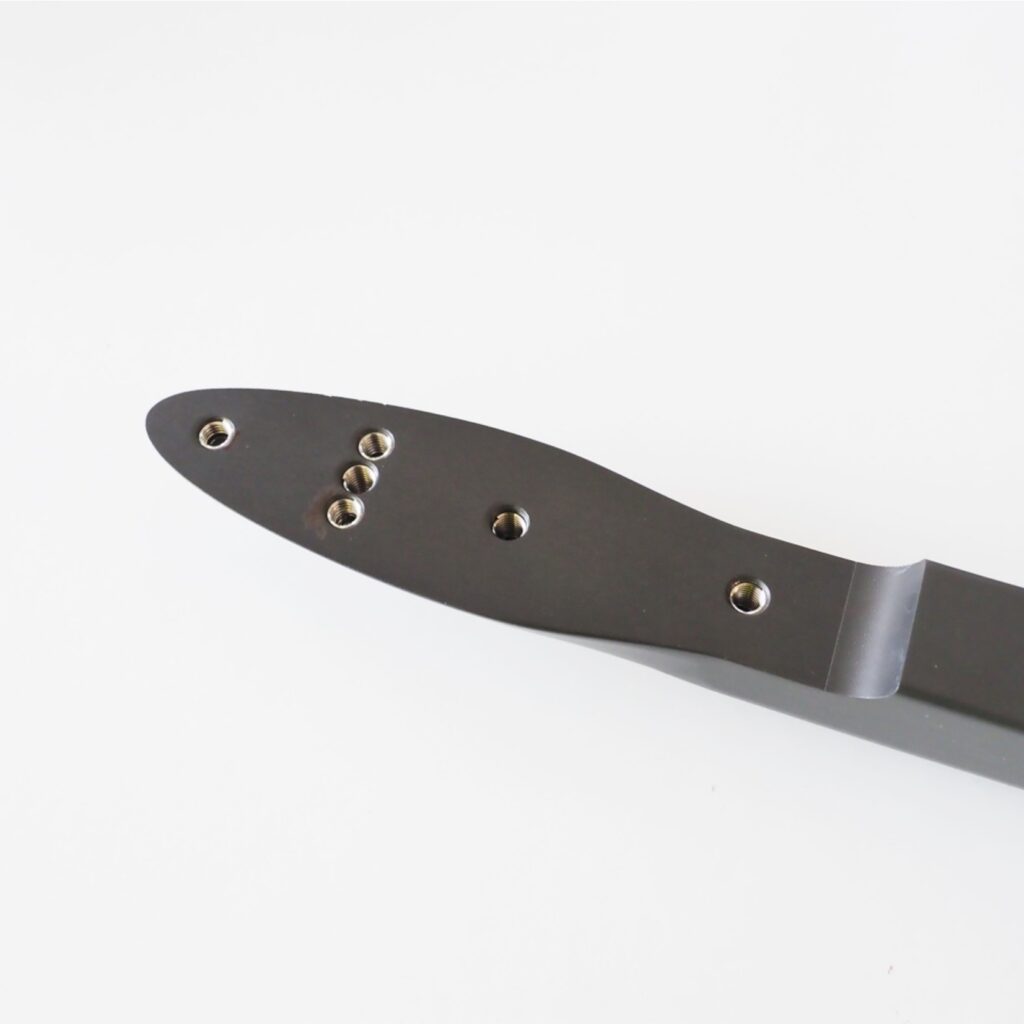
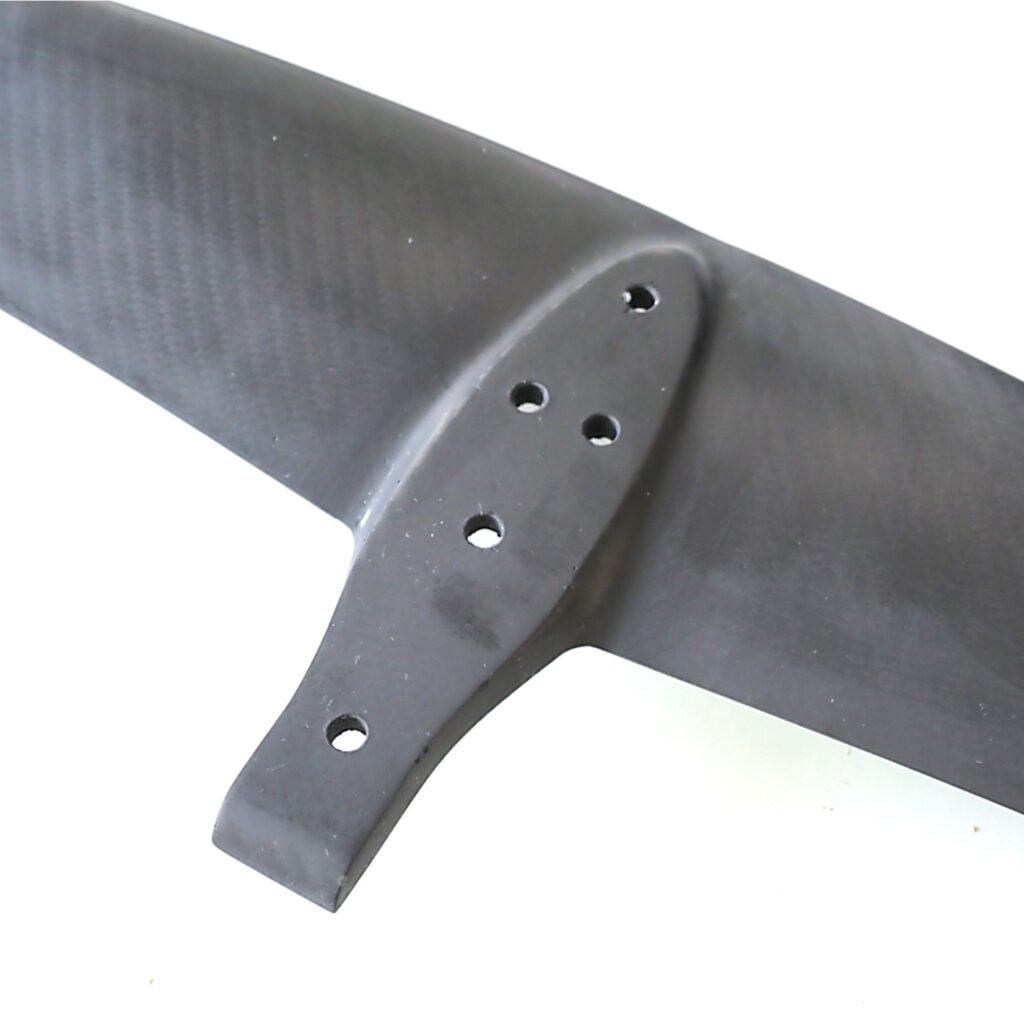
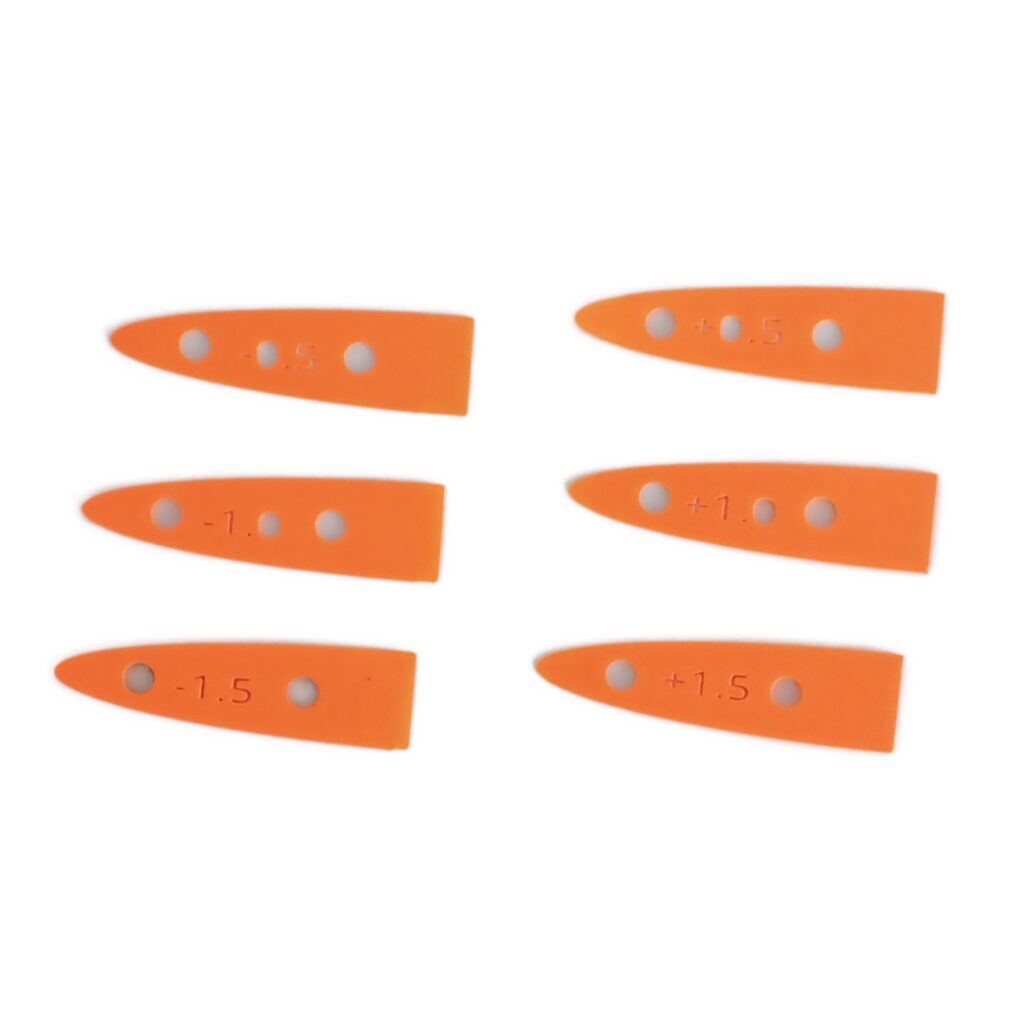
First impression of the F4 Foils Slalom on the water
We mount the foil under the Starboard Foil Salom 81 and put the Hyperglide 5 7.0m2 and go on the water with a knot or 14. We start with the light weather set up. With this set up we can easily get away with it and immediately the set up itself feels perfectly stable and familiar. We feel a stable lift that is of course more than with the largest SLR (560 cm2). Furthermore, the foil quickly feels very familiar and feels quite a lot like the ‘flying feeling’ of the Starboard slalom foil. It feels very easy and accessible.
With the first gust that got, we notice that the F4 Foils Slalom Race foil accelerates very easily, similar to the smaller Starboard SLR 560. After getting used to the F4 Foils Slalom Race foil for a few reachess, we went down wind. The foil accelerates down wind very easily. What is striking now is that despite the fact that the speed rises above 50 km /h, the amount of lift remains more or less stable.
With the Starboard SLR wings, we notice that the lift increases with acceleration, so that in the end (on the limit) you have less sense of control and have to lean forward more to keep the lift under control compared to the F4 Foils Slalom Race foil. This means that you can keep pushing longer and thus go faster with the F4 Foils Slalom Race.
After several sessions of sailing with the F4 Foils Slalom race, the stability and balance will increasingly stand out in a positive sense. Especially when foiling on the limit to overpowered, the F4 Foils Slalom Race is better, more predictable and faster than the Starboard Slalom foil with the SLR wings. The ‘glide’ of the F4 Foils Slalom Race is also slightly better than that of Starboard. The hydrodynamics are therefore good in order.
Balance in the wingsets of the F4 Foils Slalom Race
With a somewhat increasing wind, we are the first to exchange the back wing for the small variant, the R38 with an area of 190 cm2. Back on the water we notice that this set up is more nervous, so that the nose of the board is regularly pushed down with a gust. In addition, it is just a little less easy to wind foil stable. Partly because of this, we are not really faster.
If the wind increases even further, we exchange the 700 front wing (620 cm2) for the 600 front wing (560 cm2). We leave the F4 Foils R38 back wing. Back on the water we notice that the balance is immediately back and we also have more power on average and are faster. Without tuning (so use of back wing without spacers) we notice that the front wings and back wings sets of the light weather and mid weather variant are clearly well matched in the default setting. Sure, you can trim the angle of the smaller back wing, but then it feels just a little less neutral.
Best sail sizes for F4 Foils Slalom 700 and 600
For the light weather slalom set up with the 700 (620 cm2) an 8.0m2 is the ideal size. In underpower conditions, this wingset can also do well with a 7.0m2. As soon as you have more than enough power with a 7.0m2, you can already switch to the medium set up 600 (560 cm2). The 6.0m2 also goes well with this wingset.
Very rigid construction of the complete F4 Foils Slalom Race
As we wrote earlier, our reference is the Starboard slalom foil with the extra rigid C600 mast (ed. only the mast costs € 2.399,-). The F4 Foils Slalom Race mast feels just a bit stiffer and the wings /fuselages construction also feels a bit stiffer in the water than that of Starboard. Although we do not think the differences are very big. Again, it’s the small details that make the difference. It provides more control, better stability and most likely also better and more constant hydrodynamics.
Jibing with both wingsets is very easy. Deploying the jibe at high speed is very easy and the foil remains more than enough lift to get out of the jibe with sufficient speed. The rigid mast and construction ensure very good control during hijacking. This also makes it easier to use the jibe at higher speeds.
Trim fine tuning with shims
Jordy Vonk had already told us that if he trims the back wing, a minimal adjustment already has a big impact. So we start with a shim (at the front of the back wing, since the back wing is also mounted on the bottom of the fuselage) with a thickness of 0.4 mm. The effect is indeed great. We notice that on average we fly a bit higher on the foil and that we are less likely to be pushed down and fly over waves more easily. We also notice that foil also builds up more lift at higher speed. This is still easy to control, but the neutral (relaxed) feeling that first experienced has now given way to a more constant pressure on the front foot. With little wind and gusty wind, we found the use of the thin shim to really add value. This gives extra power in the complete set and you can windfoil more stable in easy way. And because of that extra power you have to work a little harder, but this is rewarded with super acceleration. It feels like the foil is going into overdrive. With more wind we prefer the default set up and the more neutral lift of the F4 Foils Slalom Race, this gives more control and allows for easier acceleration if you go down wind. But well everyone has their own preference of course.
Correct rake of F4 Foils mast difficult to fix
The F4 Foils HM Carbon mast is slightly less high at the top than the Starboard carbon masts and has an angled top. In most modern wind foil boards nowadays there is a foil box that runs straight at the top. Of course, you have the best connection if the top of the deep tuttle fits exactly to the top of the foilbox. This also ensures an optimal power distribution of the foil in the box. In addition, it is also easier to adjust the rake of the mast by means of spacers / shims.
The first time we had to look for ways to fix the F4 Foils mast at the right angle. In the end, we turned an old mast into a spacer ourselves so that the F4 Foils mast still connects to the top of the foilbox and we can fix the mast in the foilbox. This also allows us to easily adjust the rake of the mast by placing a rake shim under the homemade spacer. Inquiring with F4 Foils, we learned that in 2023 this mast will also be equipped with a larger 4-sided head.
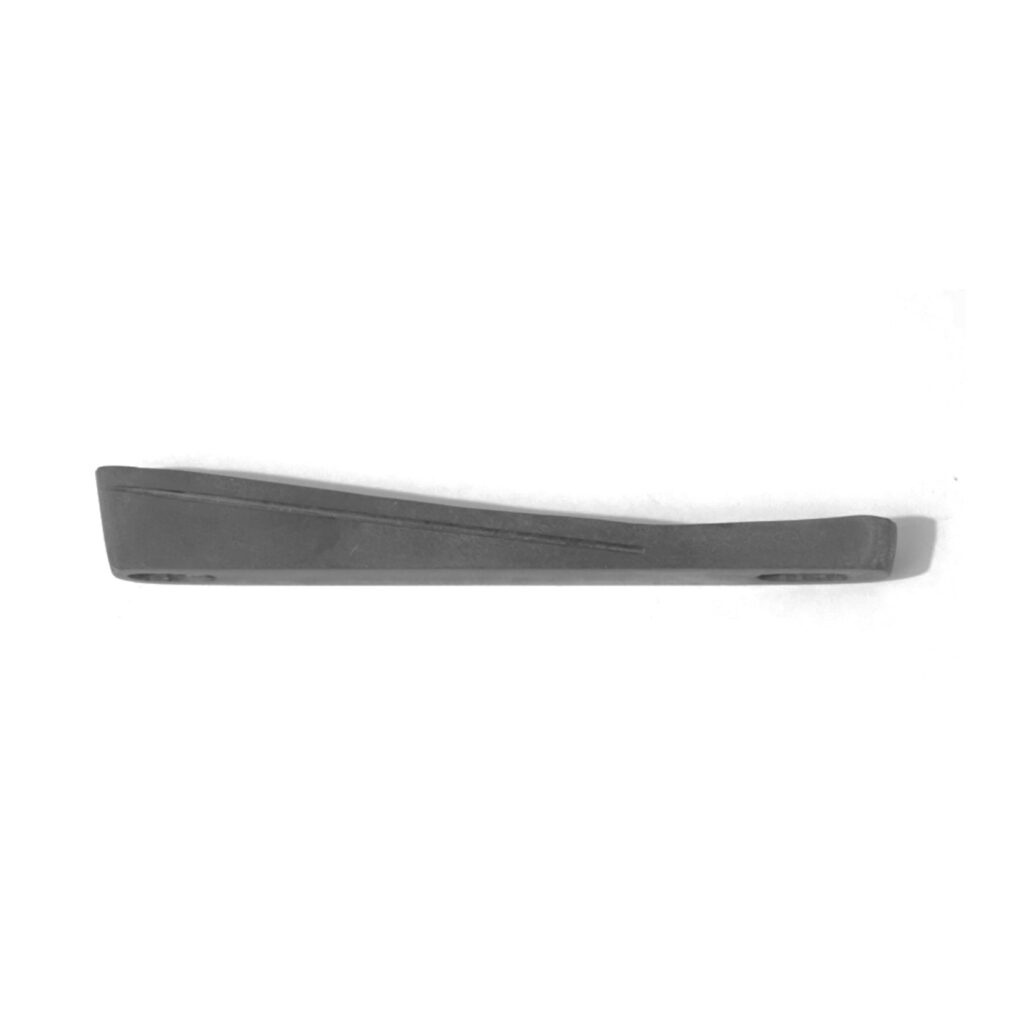
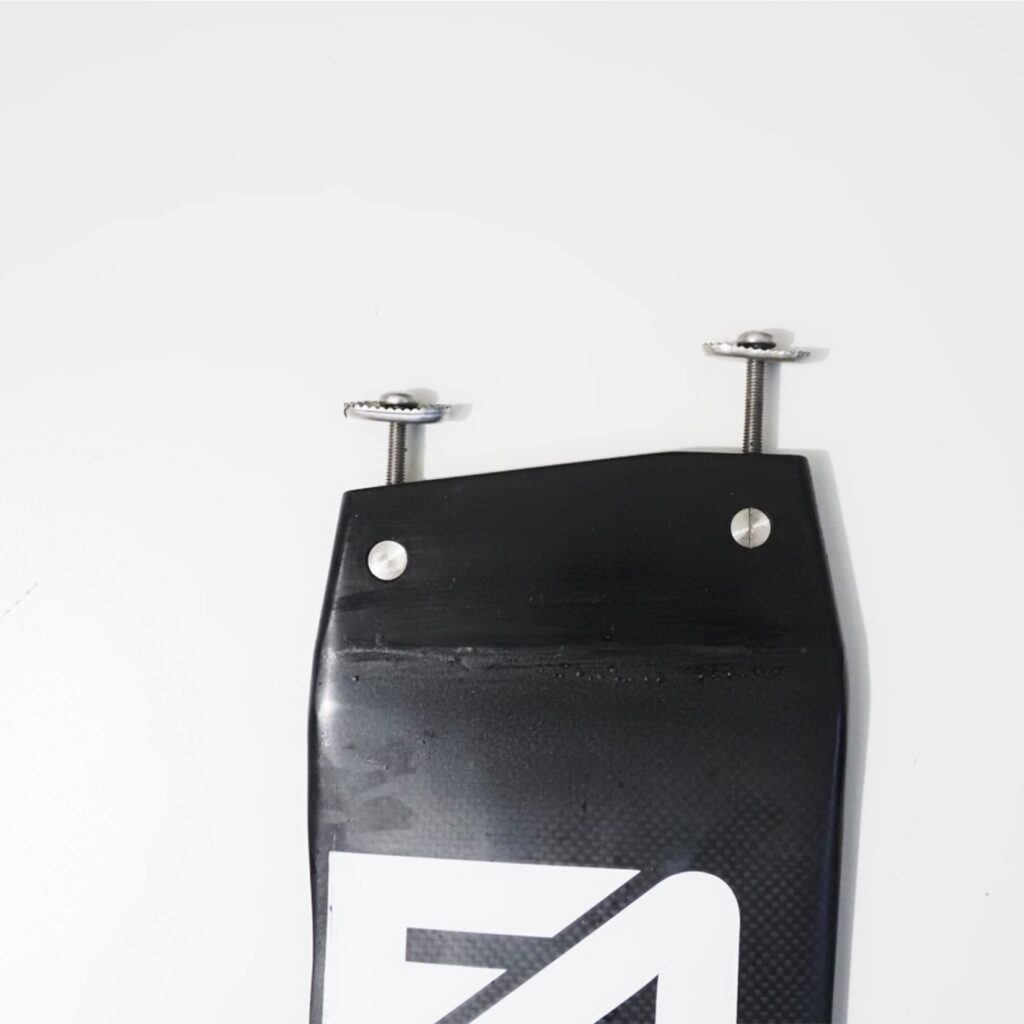
Standard rake F4 Foils mast relatively large
Every board is different, so it is not possible to say ‘hard’ what the standard rake of a mast is. In our Starboard Slalom foil board, the standard rake of the F4 Foils carbon mast is approx + 3 degrees. That is a lot more than the Starboard C600 mast, which has a rake of +1.7 as standard. For light weather and / or the ability to plan quickly, we regularly use a negative rake shims with the F4 Foils mast and for slalom foiling the standard rake is good for us.
Is this F4 Foils Slalom Race suitable for?
- Of course the slalom race foilers who want to break speed records
- Certainly the light weather set up will also please the freerider because of the neutral behavior
- Use in combination with light weather or medium wind slalom foilboards
- Also on a freeride board, such as the Starboard Freeride 150, the foil works very well
Overall conclusion F4 Foils Slalom Race
The F4 Foils Salom Race is a foil that actually feels a bit better and a bit more ‘modern’ in all areas than the Starboard reference foil. We were pleasantly surprised that the F4 Foils is so easy and forgiving. Every freeracer can handle the foil just fine, no problem. The flying feeling is quite similar to the Starboard reference foil, what is clearly noticeable is the (fine) neutral lift feeling of the F4 Foils, which makes it much easier to go fast. In the lower and medium wind range, the performance of this foil is comparable or slightly better than the Starboard reference foil, but in the higher wind range, the F4 Foils Slalom Race is really better in every way. The stiffness and control of the foil certainly contributes to this.
Test the F4 Foils Slalom Race yourself
Do you want to try out this F4 Foils Slalom Race or another F4 Foils? We can have the most common F4 Foils available for testing. Testing of material is only possible by appointment. We are also happy to help with the tuning of the foil. If you have any questions or would like to make a test appointment, please send us an email.


